Choose your language here
Cascadia
Setup1Place the round animal tokens in the bag![Animatioin inside]()
![Expand]()


2Prepare the cones as a supply![Animatioin inside]()
![Expand]()


3Remove hexagonal wilderness tiles depending on the number of players![Animatioin inside]()
![Expand]()
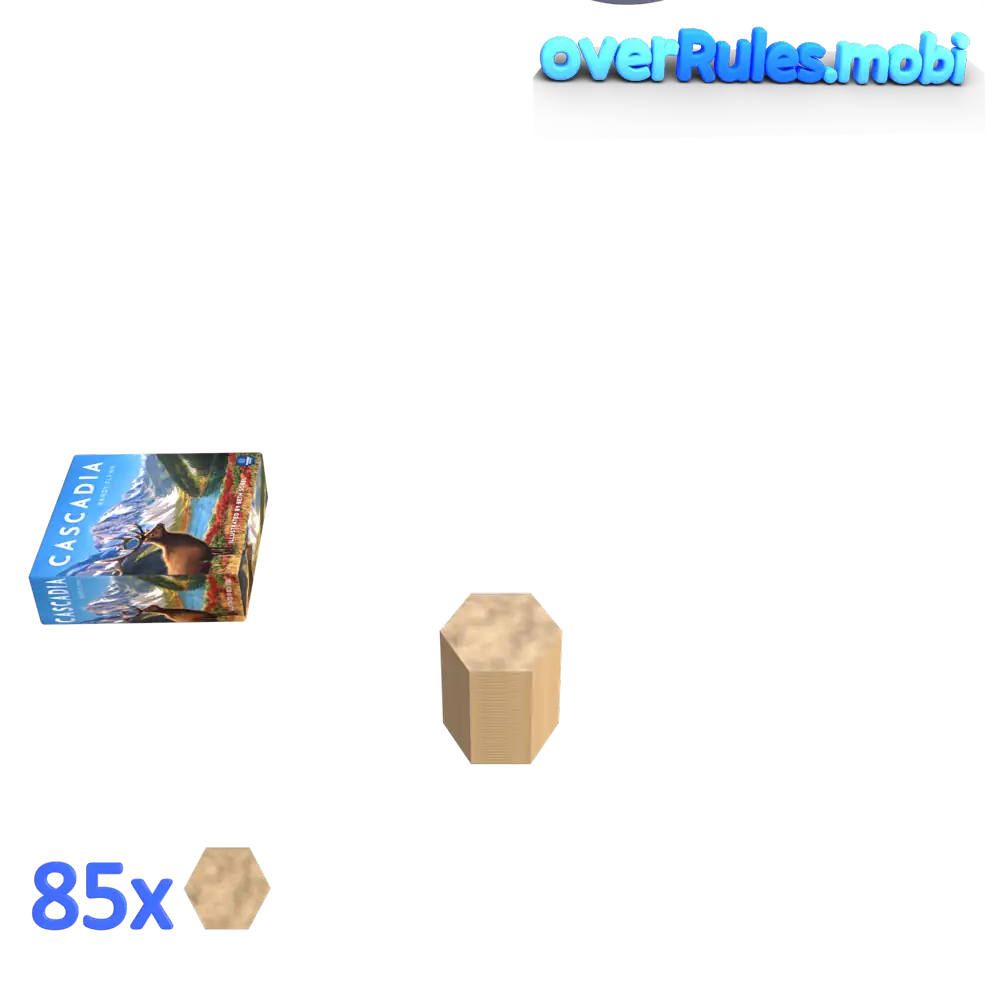

4Make some hidden stacks out of the remaining wilderness tiles
5Place 4 of the wilderness tiles openly as a display![Animatioin inside]()
![Expand]()
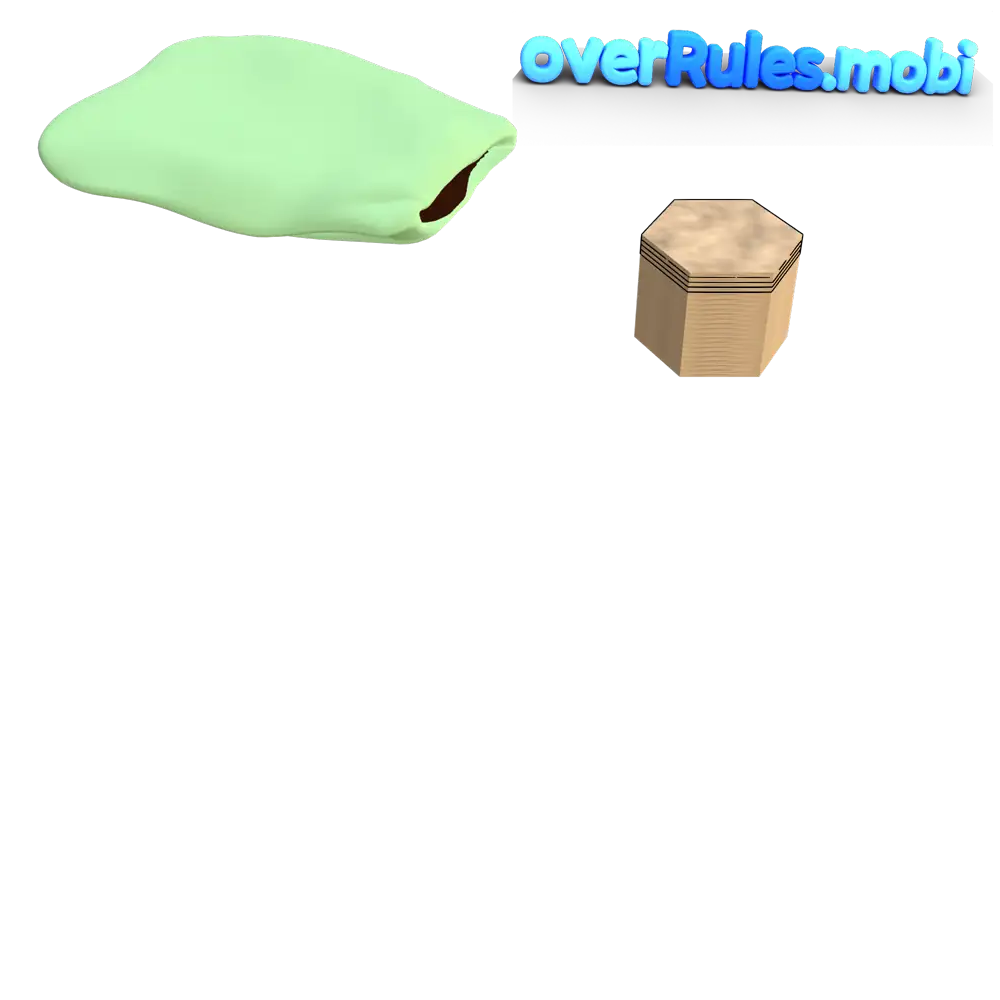

6Draw 4 round animal tokens from the bag and place them in front of the wilderness tiles![Animatioin inside]()
![Expand]()
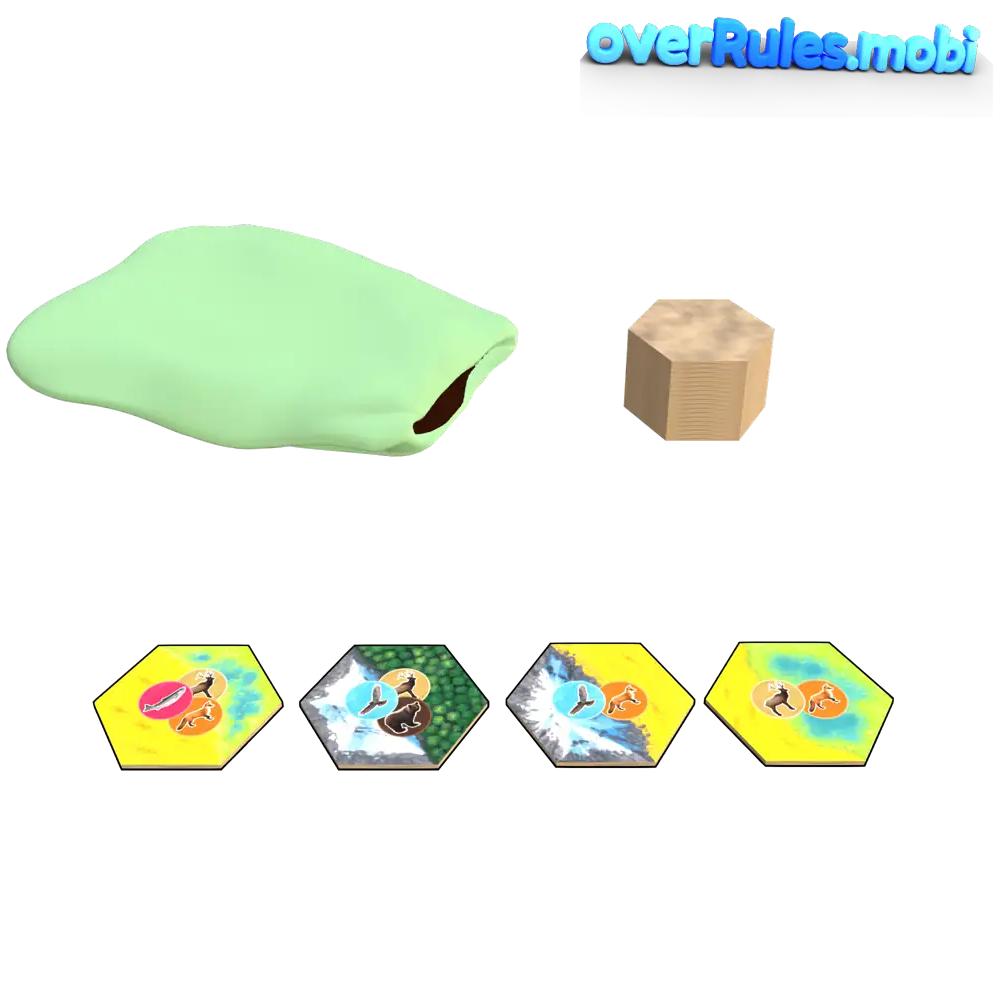

7Choose a card for each animal species. So, 5 in total![Animatioin inside]()
![Expand]()
![Animatioin inside]()
![Expand]()
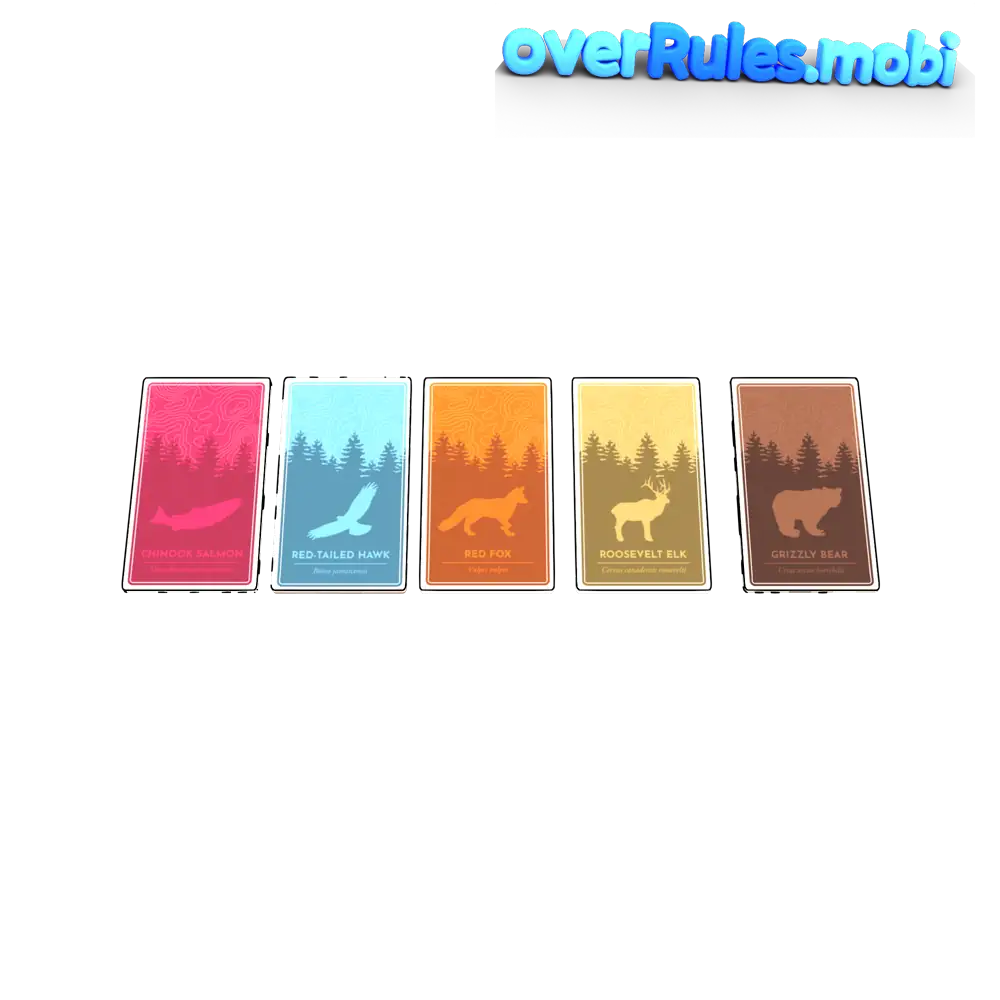
 Later, draw a random card from each animal typeFor children and beginners, there's a simple card where all animals are scored equally
Later, draw a random card from each animal typeFor children and beginners, there's a simple card where all animals are scored equally
8Draw starting landscapes![Animatioin inside]()
![Expand]()
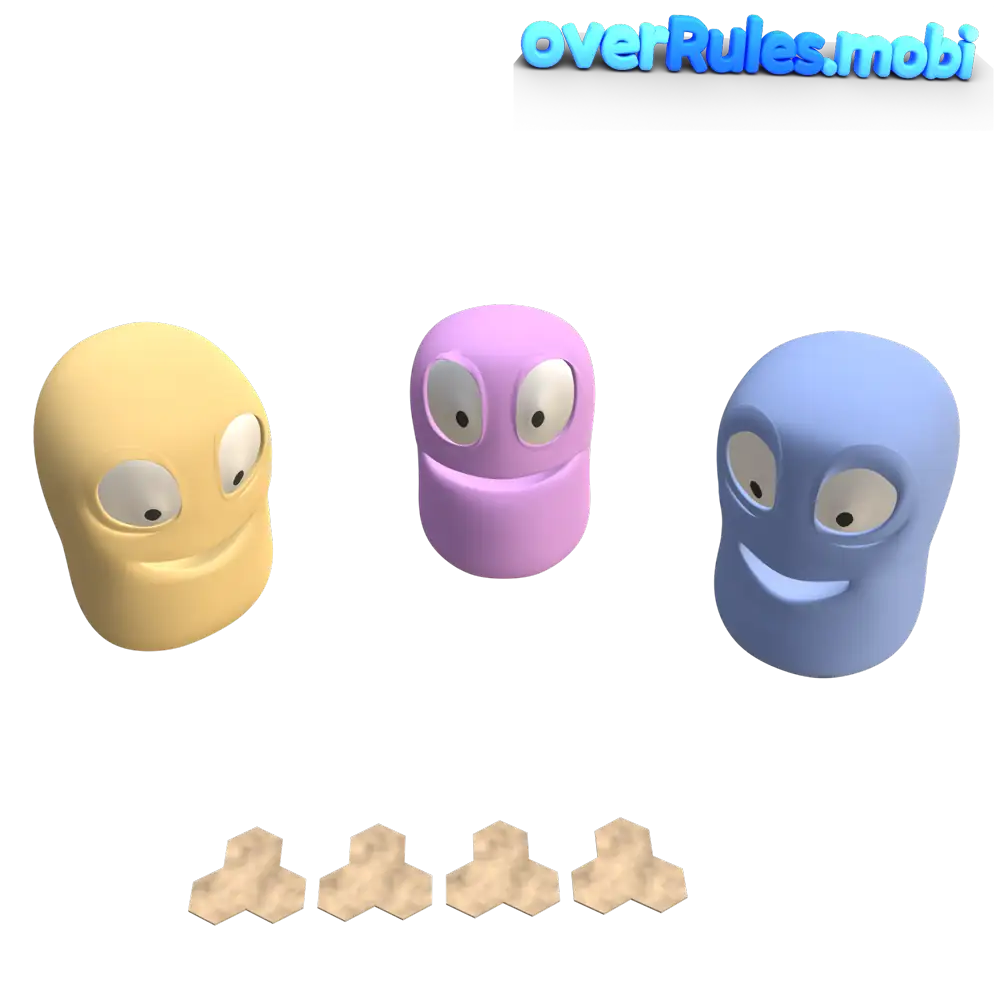

9Determine a starting player and then begin
Setup
1Place the round animal tokens in the bag![Animatioin inside]()
![Expand]()


1
Place the round animal tokens in the bag


2Prepare the cones as a supply![Animatioin inside]()
![Expand]()


2
Prepare the cones as a supply


3Remove hexagonal wilderness tiles depending on the number of players![Animatioin inside]()
![Expand]()


3
Remove hexagonal wilderness tiles depending on the number of players
Are you 4 players? Remove 2
Are you three? Remove 22
Are you 2 players? Remove 42


4Make some hidden stacks out of the remaining wilderness tiles
4
Make some hidden stacks out of the remaining wilderness tiles
5Place 4 of the wilderness tiles openly as a display![Animatioin inside]()
![Expand]()


5
Place 4 of the wilderness tiles openly as a display


6Draw 4 round animal tokens from the bag and place them in front of the wilderness tiles![Animatioin inside]()
![Expand]()


6
Draw 4 round animal tokens from the bag and place them in front of the wilderness tiles


7Choose a card for each animal species. So, 5 in total![Animatioin inside]()
![Expand]()
![Animatioin inside]()
![Expand]()

 Later, draw a random card from each animal typeFor children and beginners, there's a simple card where all animals are scored equally
Later, draw a random card from each animal typeFor children and beginners, there's a simple card where all animals are scored equally
7
Choose a card for each animal species. So, 5 in total
For the first game, take cards with an A at the bottom right


Later, draw a random card from each animal type
For children and beginners, there's a simple card where all animals are scored equally
8Draw starting landscapes![Animatioin inside]()
![Expand]()


8
Draw starting landscapes
You randomly draw one of these 3-sided hexagons


9Determine a starting player and then begin
9
Determine a starting player and then begin
Goal1Collect points with animal patterns – exactly as shown on the cards![Animatioin inside]()
![Expand]()
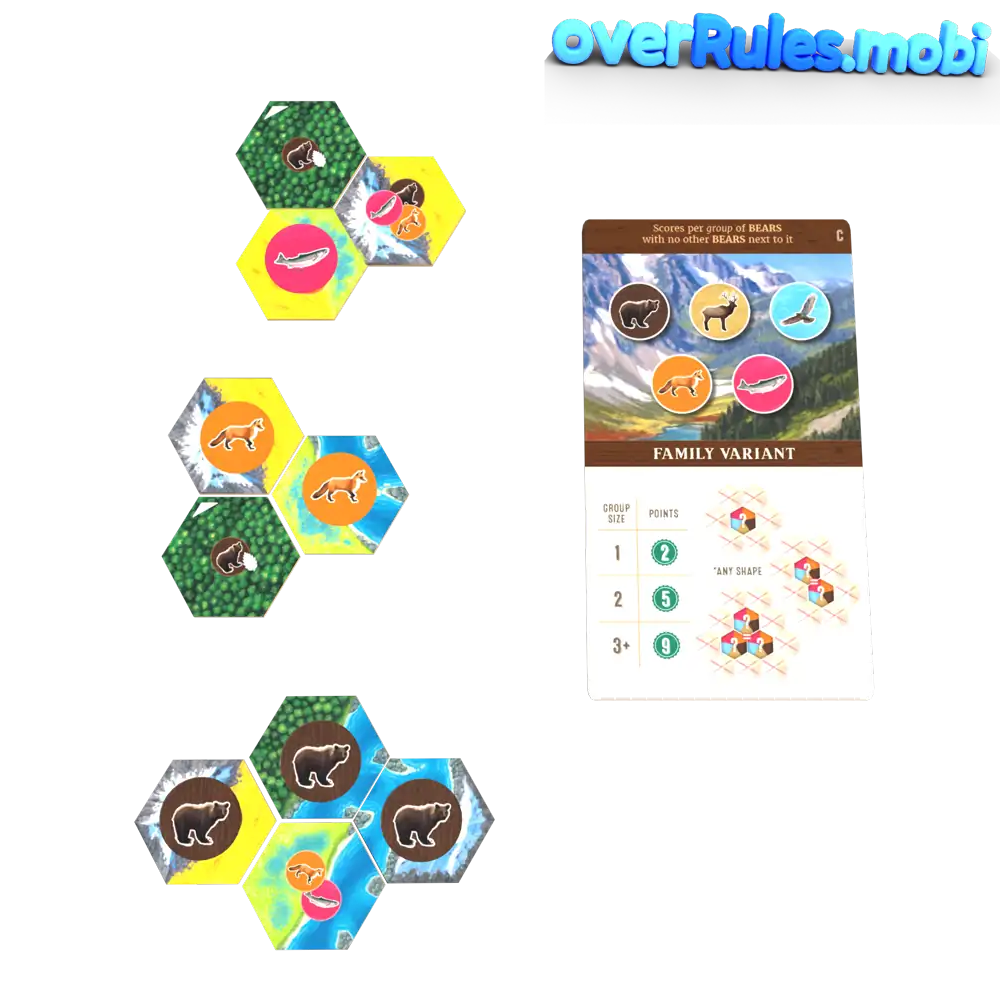

2Landscapes also score points – the bigger, the better!![Animatioin inside]()
![Expand]()
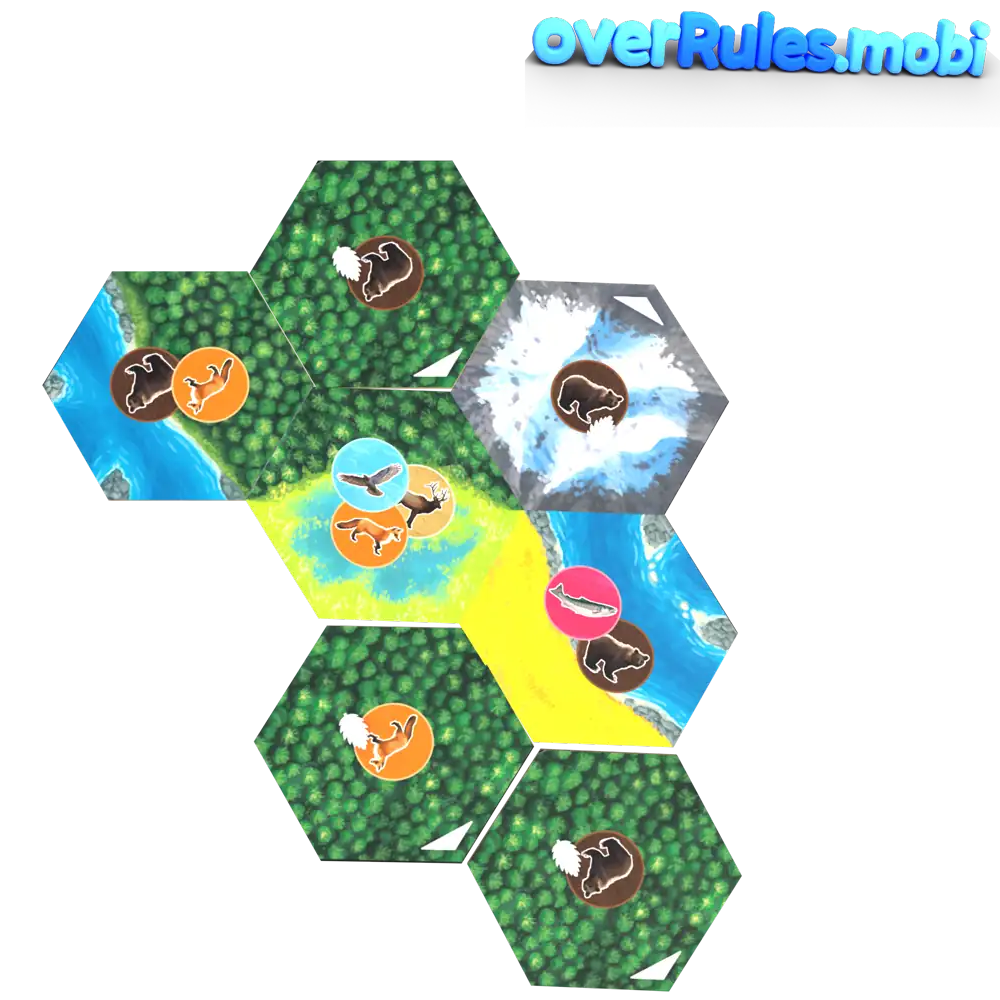

3The game ends when there are no hexagonal landscape tiles left
4The player with the most points at the end wins
Goal
1Collect points with animal patterns – exactly as shown on the cards![Animatioin inside]()
![Expand]()


1
Collect points with animal patterns – exactly as shown on the cards


2Landscapes also score points – the bigger, the better!![Animatioin inside]()
![Expand]()


2
Landscapes also score points – the bigger, the better!


3The game ends when there are no hexagonal landscape tiles left
3
The game ends when there are no hexagonal landscape tiles left
4The player with the most points at the end wins
4
The player with the most points at the end wins
Gameplay1When it's your turn, you go through the following 4 phases
2Phase 1: Check for overpopulation![Animatioin inside]()
![Expand]()
![Animatioin inside]()
![Expand]()
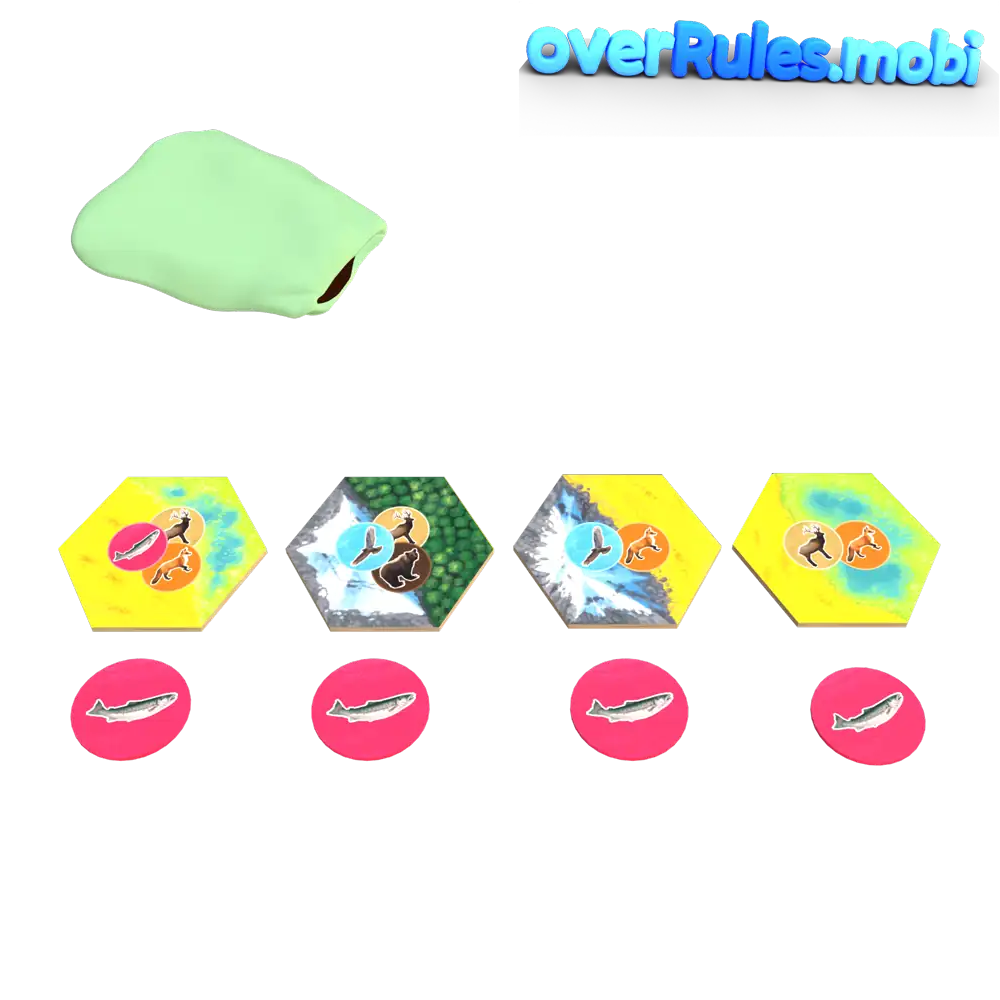
 Are 3 animals the same?
Are 3 animals the same?![Animatioin inside]()
![Expand]()
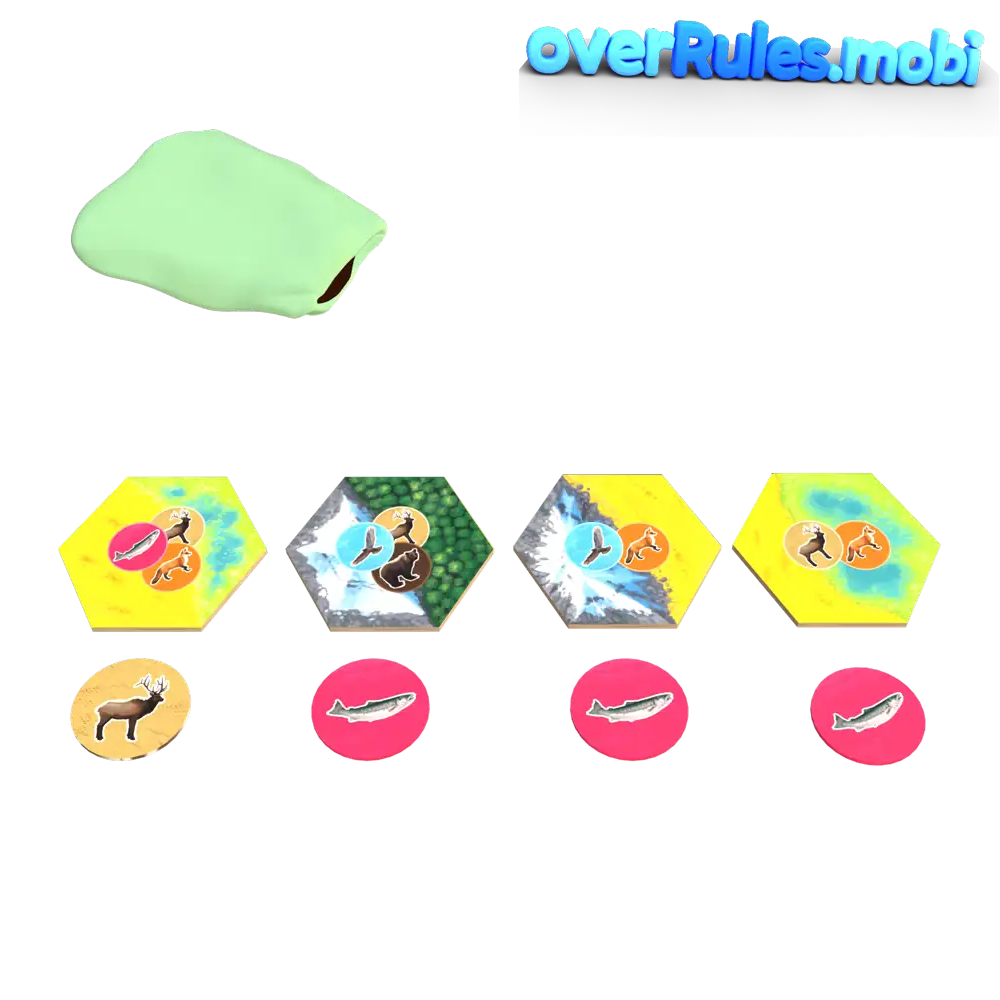

3Phase 2: Choose a wilderness tile and an animal![Animatioin inside]()
![Expand]()
![Animatioin inside]()
![Expand]()
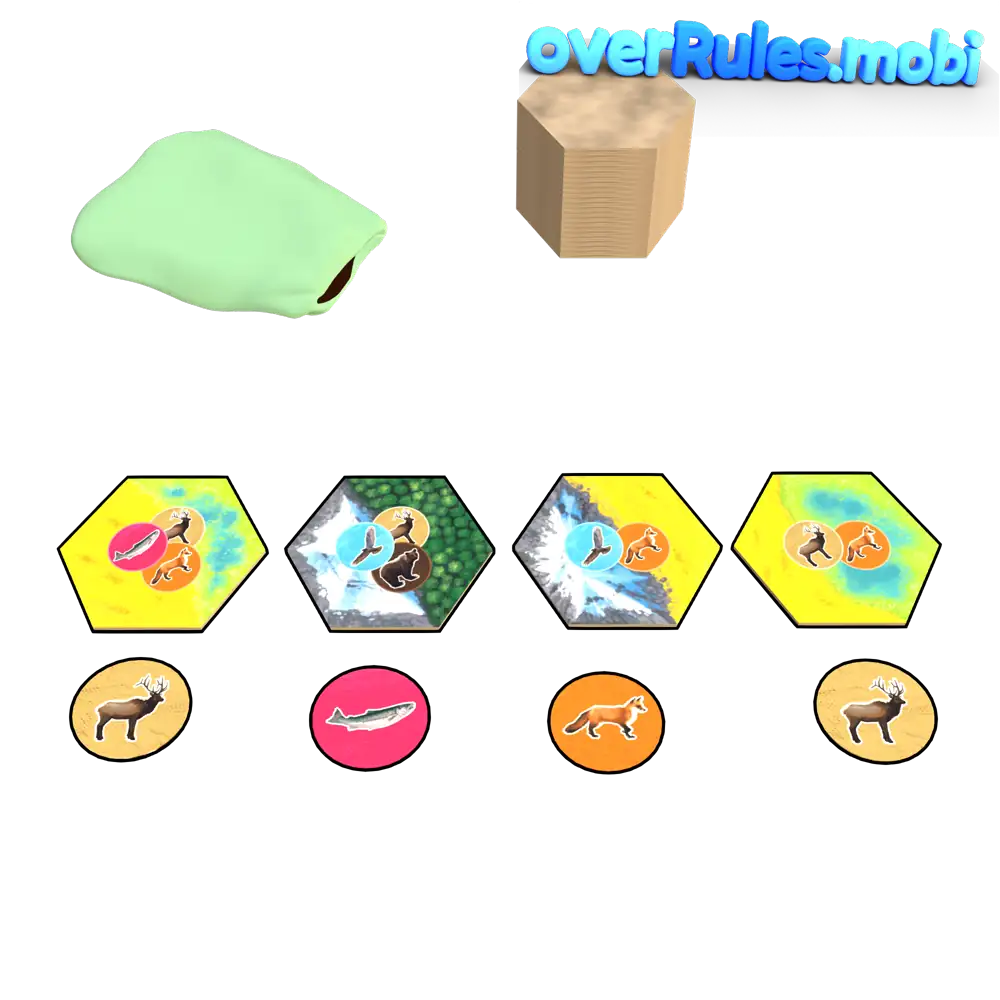
 Or spend a cone for more options
Or spend a cone for more options![Animatioin inside]()
![Expand]()
![Animatioin inside]()
![Expand]()
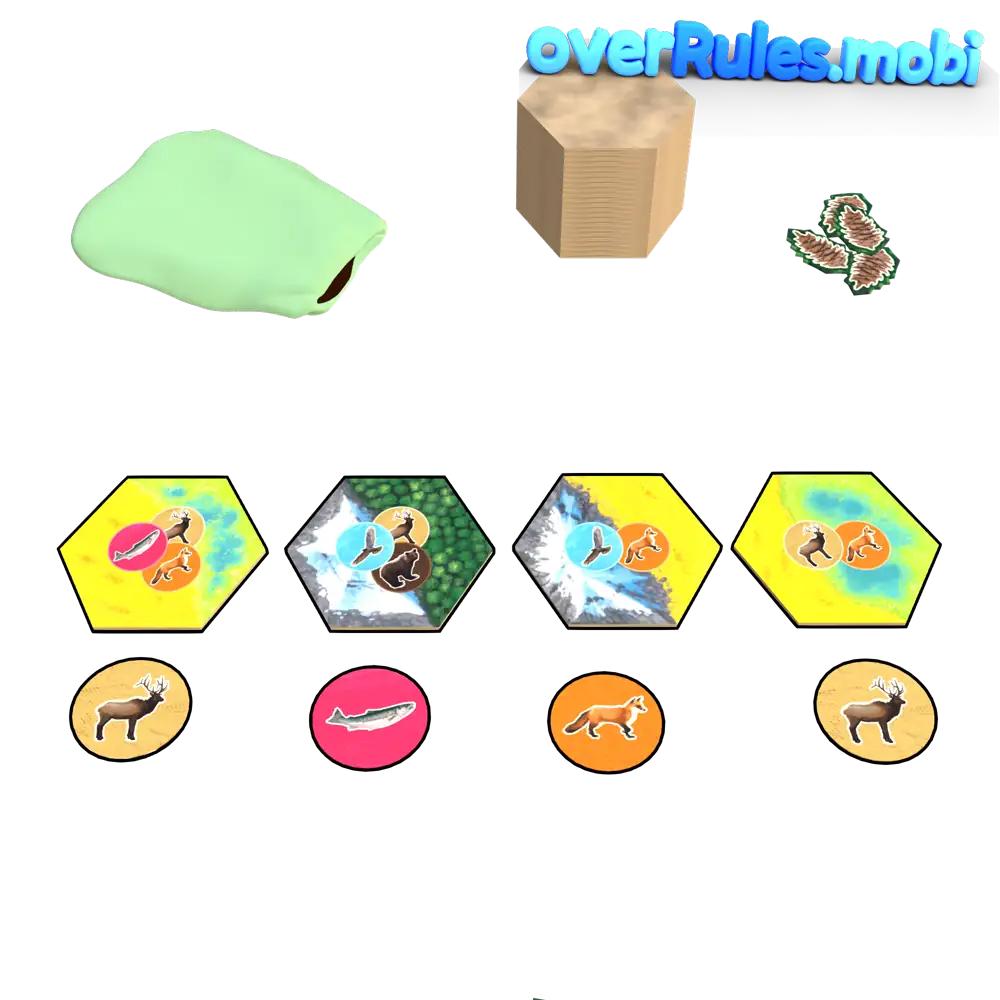
 Or exchange up to 3 animals, and draw new ones
Or exchange up to 3 animals, and draw new ones![Animatioin inside]()
![Expand]()
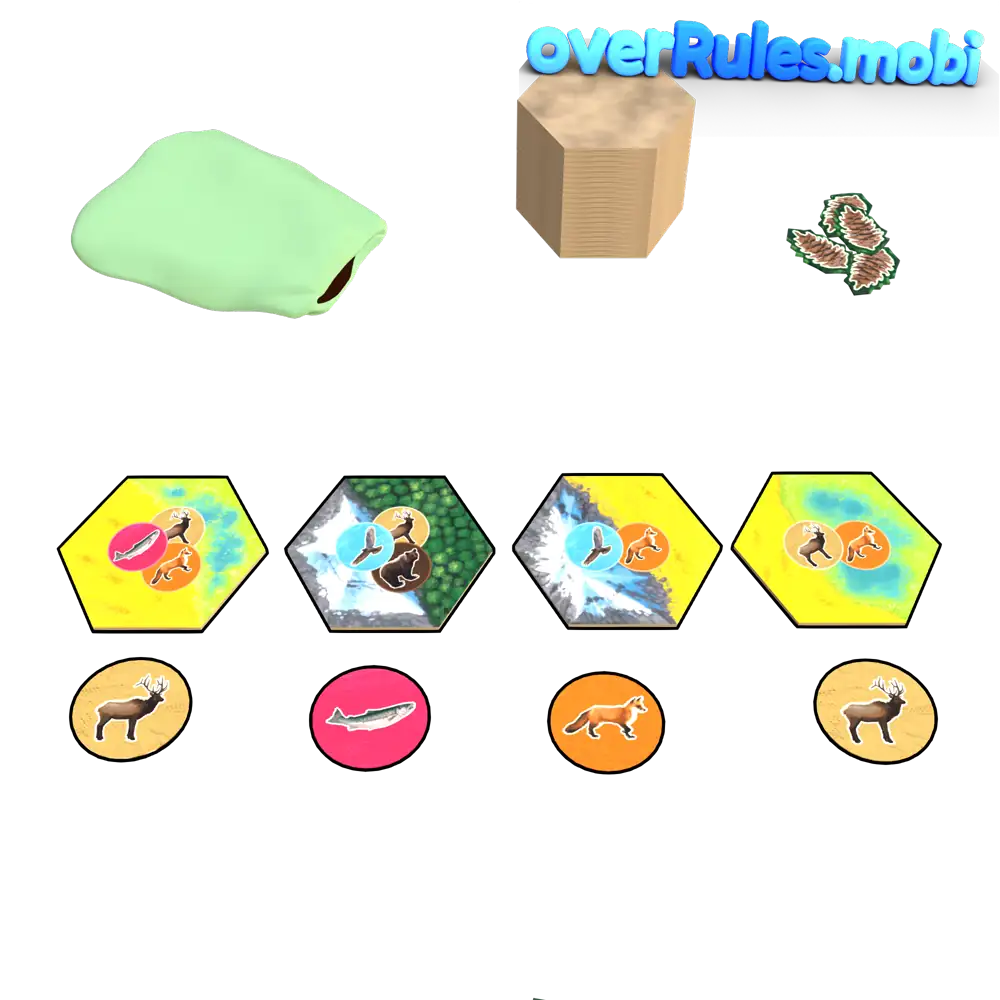

4Phase 3: Place tiles![Animatioin inside]()
![Expand]()
![Animatioin inside]()
![Expand]()
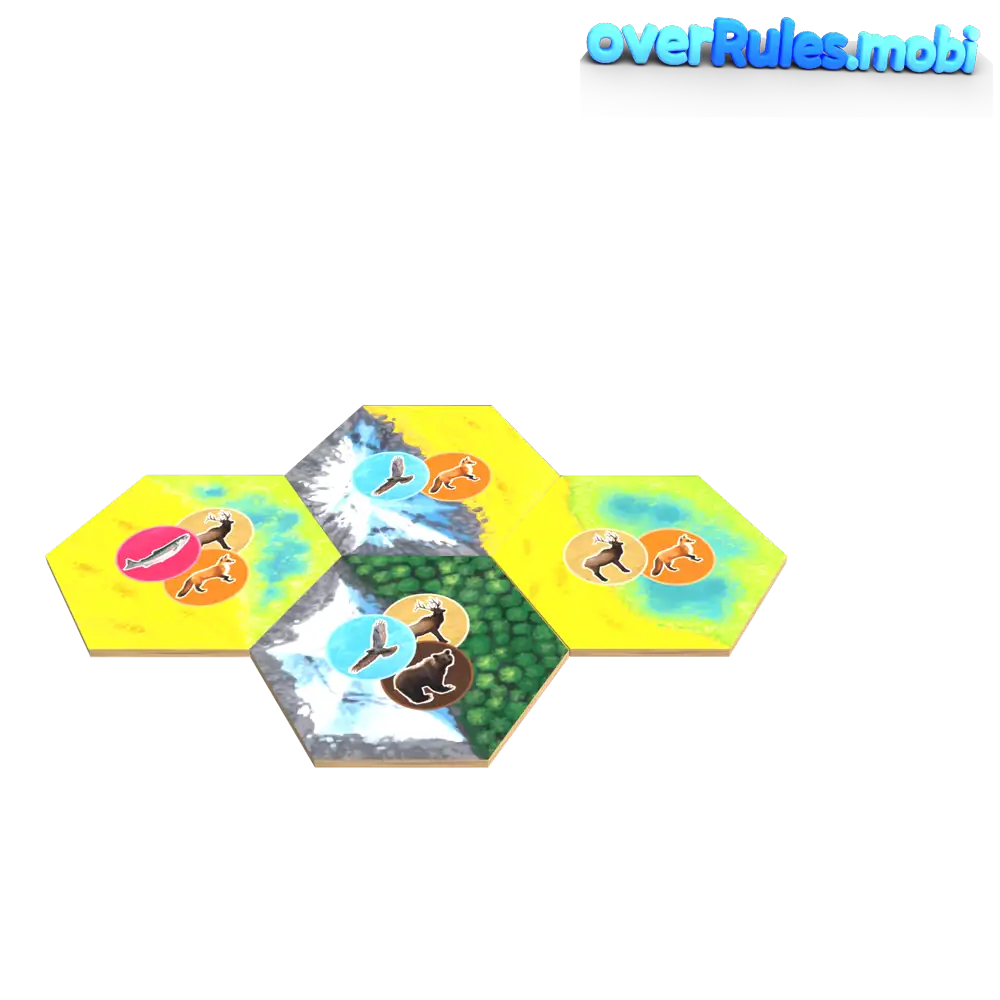
 You may place the animal tile or throw it into the bag
You may place the animal tile or throw it into the bag![Animatioin inside]()
![Expand]()
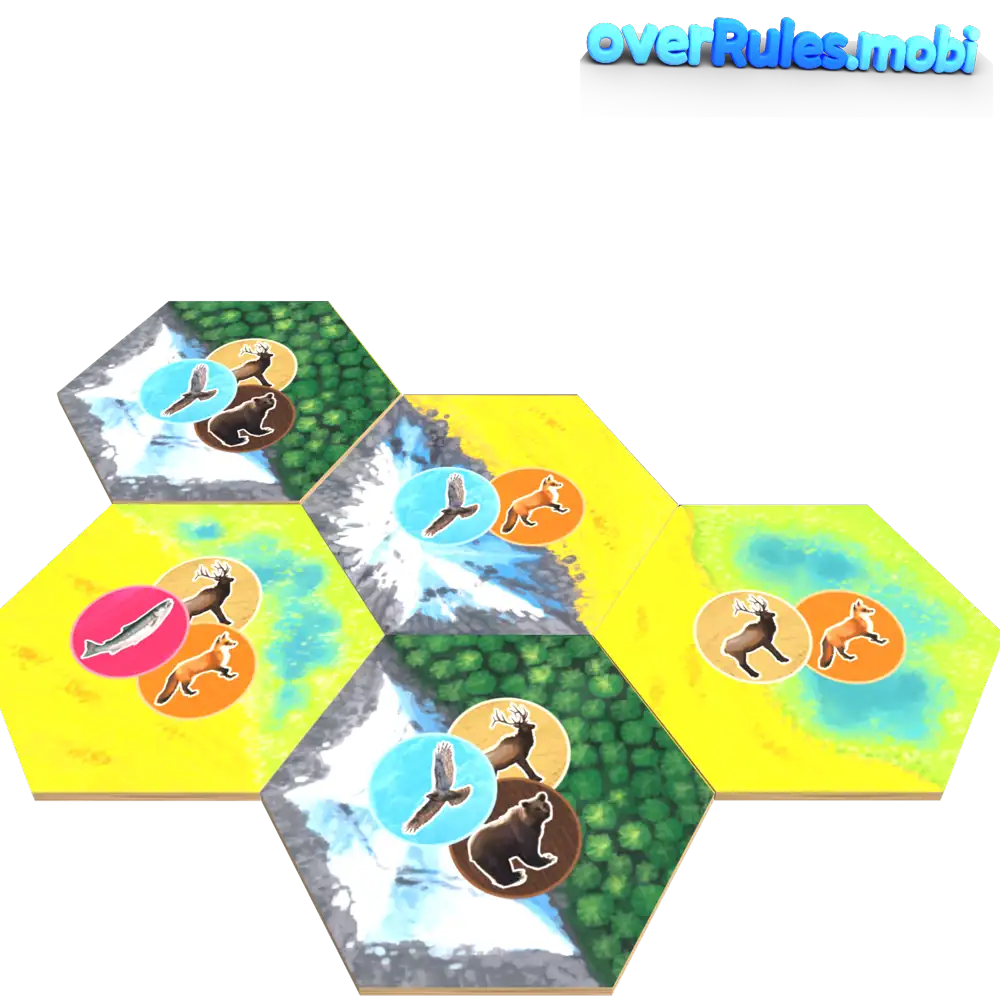
 Cone on the wilderness tile with the new animal
Cone on the wilderness tile with the new animal![Animatioin inside]()
![Expand]()
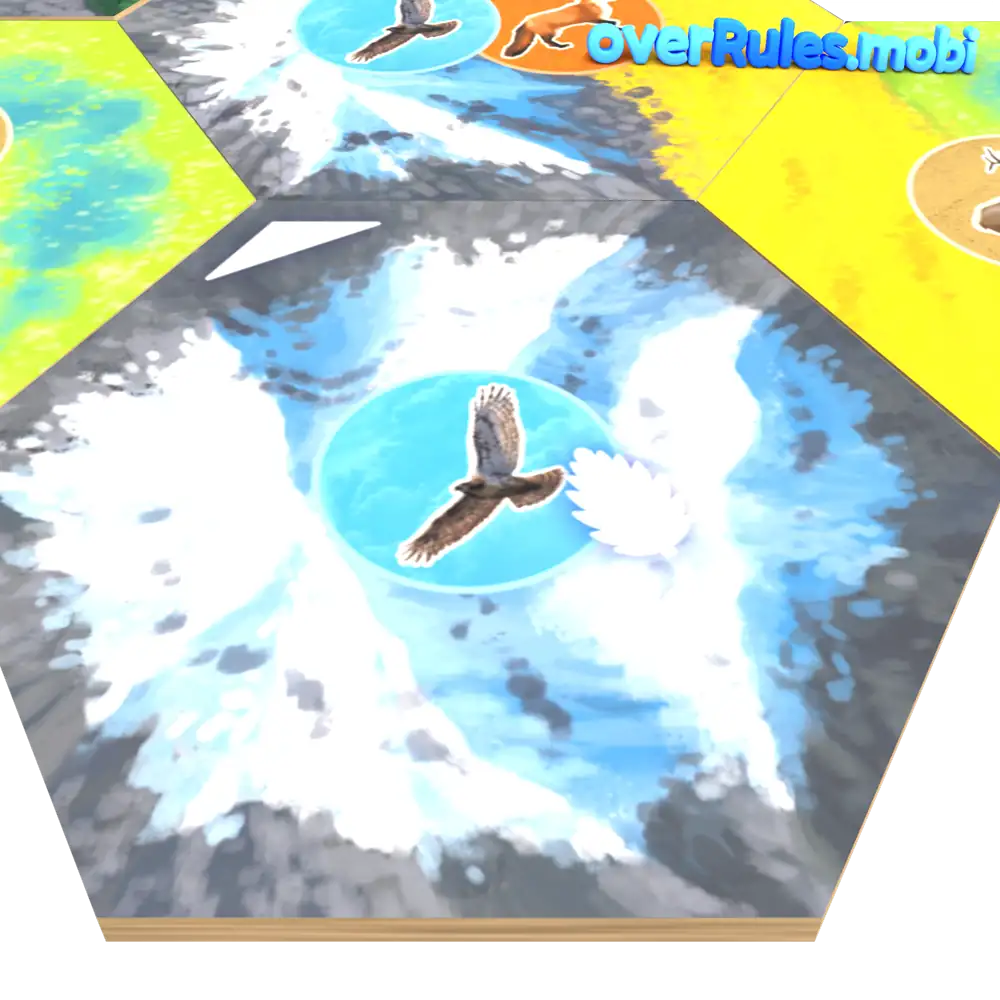

5Phase 4: Refill the display![Animatioin inside]()
![Expand]()
![Animatioin inside]()
![Expand]()
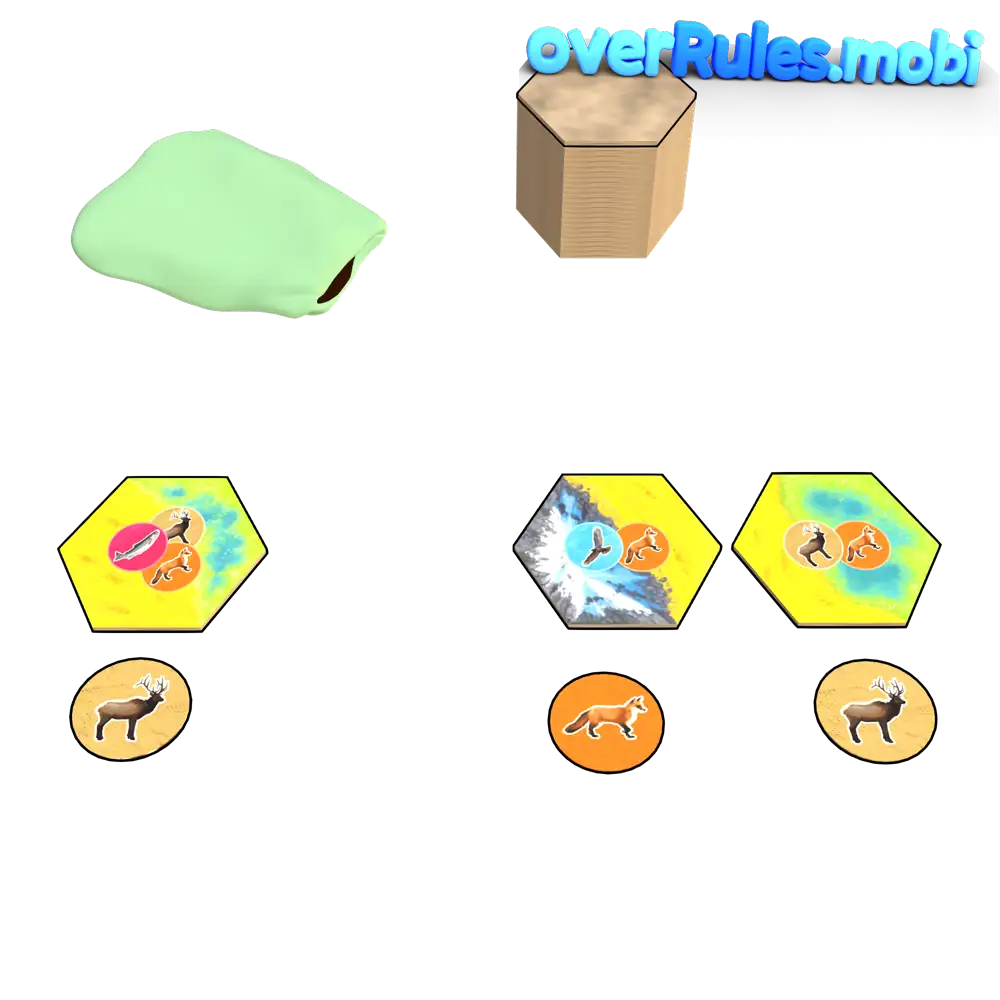

6No hexagonal tiles left?![Animatioin inside]()
![Expand]()
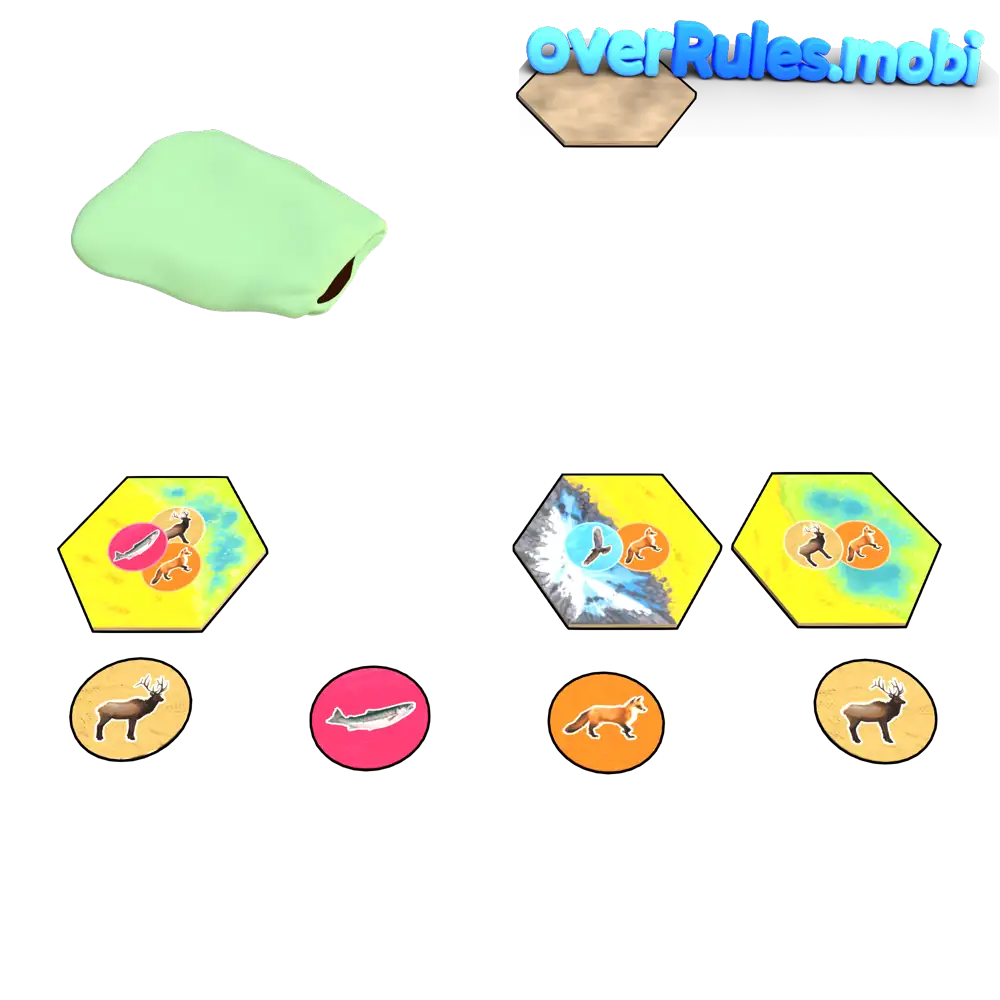

Gameplay
1When it's your turn, you go through the following 4 phases
1
When it's your turn, you go through the following 4 phases
2Phase 1: Check for overpopulation![Animatioin inside]()
![Expand]()
![Animatioin inside]()
![Expand]()

 Are 3 animals the same?
Are 3 animals the same?![Animatioin inside]()
![Expand]()


2
Phase 1: Check for overpopulation
Are all 4 animals identical?
Push them aside
Draw new ones from the bag and lay them out
If they're all the same again, repeat the process
Then throw the old animals into the bag


Are 3 animals the same?
Once during your turn you may:
Set aside 3 identical animals
Draw 3 new animals and place them in the display
Afterwards, throw the old animals into the bag


3Phase 2: Choose a wilderness tile and an animal![Animatioin inside]()
![Expand]()
![Animatioin inside]()
![Expand]()

 Or spend a cone for more options
Or spend a cone for more options![Animatioin inside]()
![Expand]()
![Animatioin inside]()
![Expand]()

 Or exchange up to 3 animals, and draw new ones
Or exchange up to 3 animals, and draw new ones![Animatioin inside]()
![Expand]()


3
Phase 2: Choose a wilderness tile and an animal
Take an animal and a wilderness tile that are beneath each other


Or spend a cone for more options
Throw it into the cone supply. Then you may:
Take any animal with any wilderness tile from the display


Or exchange up to 3 animals, and draw new ones


4Phase 3: Place tiles![Animatioin inside]()
![Expand]()
![Animatioin inside]()
![Expand]()

 You may place the animal tile or throw it into the bag
You may place the animal tile or throw it into the bag![Animatioin inside]()
![Expand]()

 Cone on the wilderness tile with the new animal
Cone on the wilderness tile with the new animal![Animatioin inside]()
![Expand]()


4
Phase 3: Place tiles
The wilderness tile must be placed
It doesn't have to be the same landscape
Just make sure at least one side touches another tile


You may place the animal tile or throw it into the bag
If you place it:
Find a suitable tile in your landscape where the animal can go


Cone on the wilderness tile with the new animal
Is a white cone depicted on the tile where you placed the animal?
Then take a cone from the supply


5Phase 4: Refill the display![Animatioin inside]()
![Expand]()
![Animatioin inside]()
![Expand]()


5
Phase 4: Refill the display
Draw until the display is fully replenished


6No hexagonal tiles left?![Animatioin inside]()
![Expand]()


6
No hexagonal tiles left?
End of the game!
Grab the score pad and tally the points


Scoring1Each player does the following:![Expand]()
![Expand]()
![Link]()
![Animatioin inside]()
![Expand]()
![Animatioin inside]()
![Expand]()

 Enter the number of tiles on the score pad
Enter the number of tiles on the score pad![Animatioin inside]()
![Expand]()
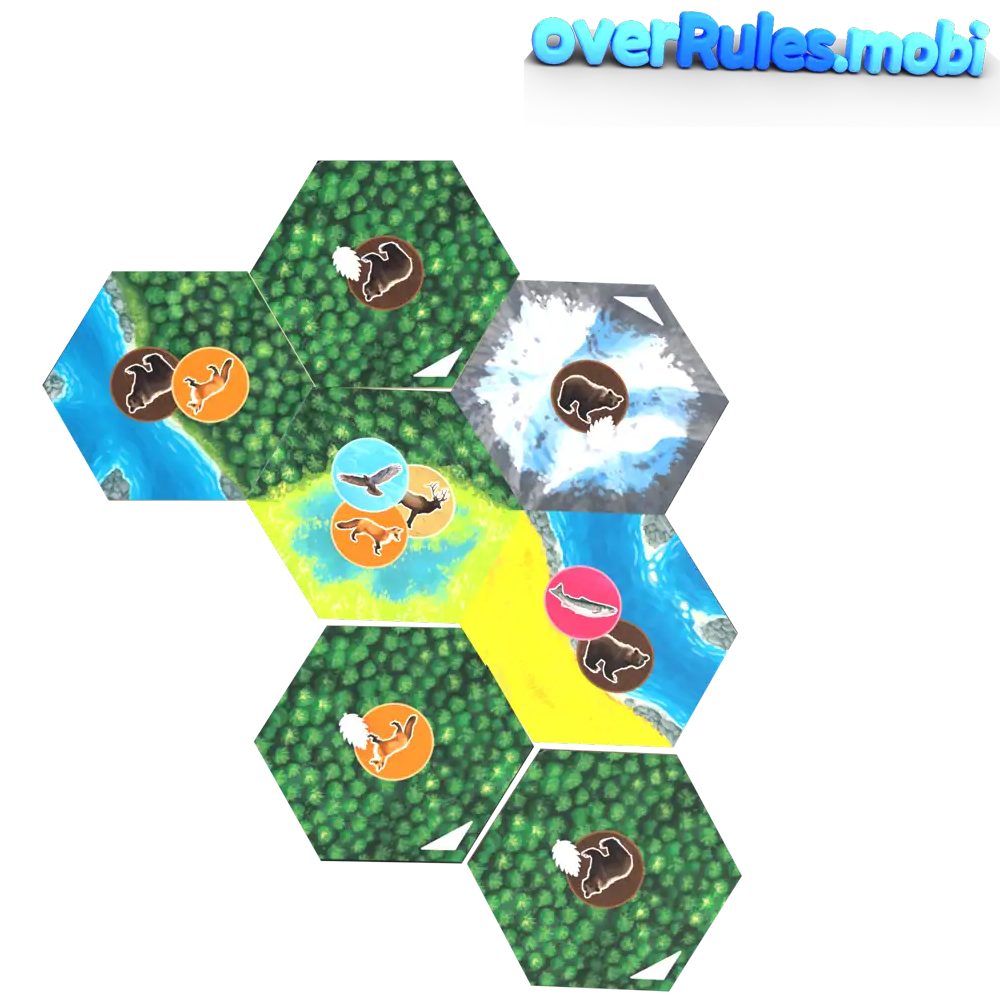
 For bonus points, there's an extra box on the right
For bonus points, there's an extra box on the right![Animatioin inside]()
![Expand]()
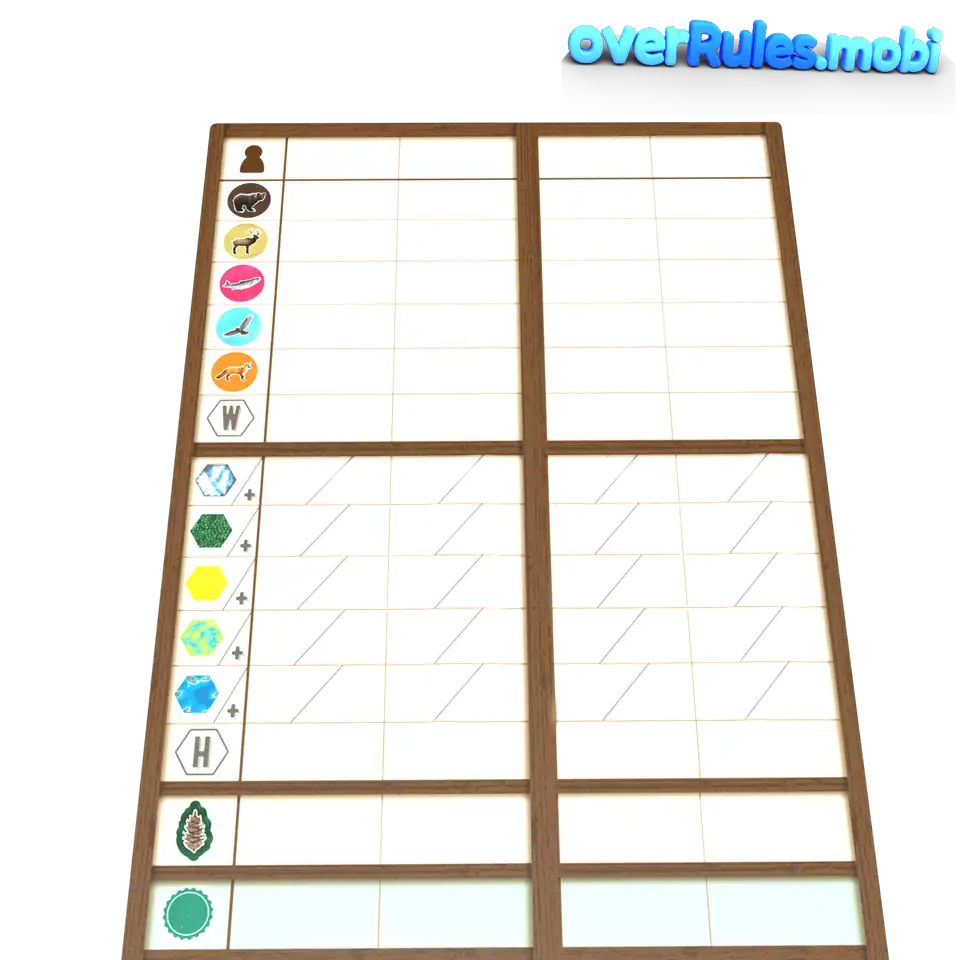

2Bonus points for areas![Expand]()
![Animatioin inside]()
![Expand]()
![Animatioin inside]()
![Expand]()
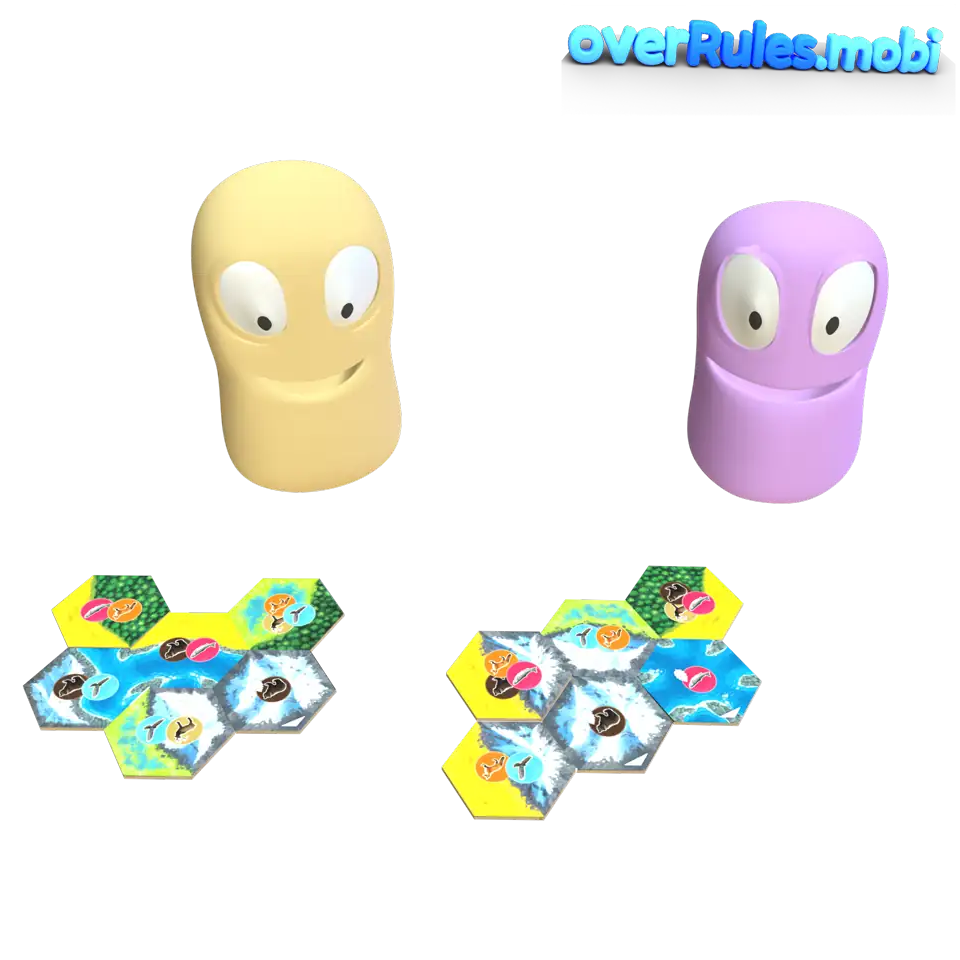
 If there's a tie, each player gets 1 point
If there's a tie, each player gets 1 point![Animatioin inside]()
![Expand]()
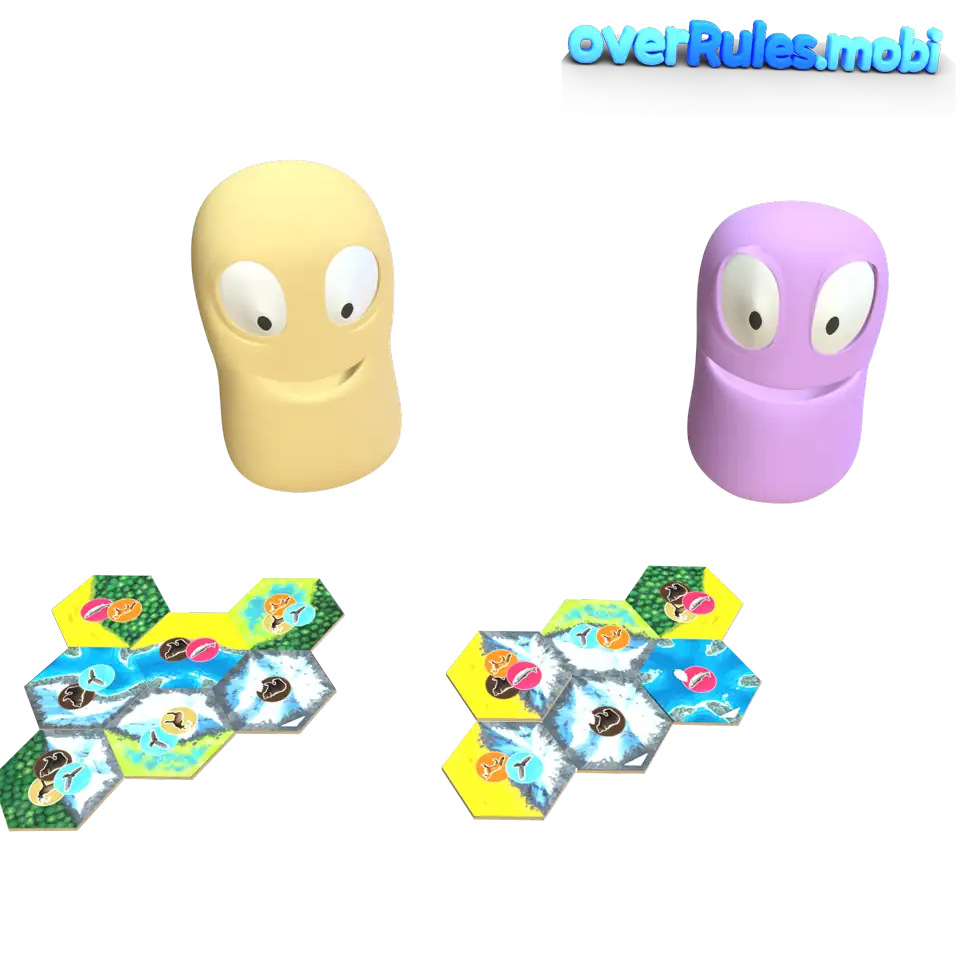
 3-4 players:
3-4 players:![Animatioin inside]()
![Expand]()
![Animatioin inside]()
![Expand]()
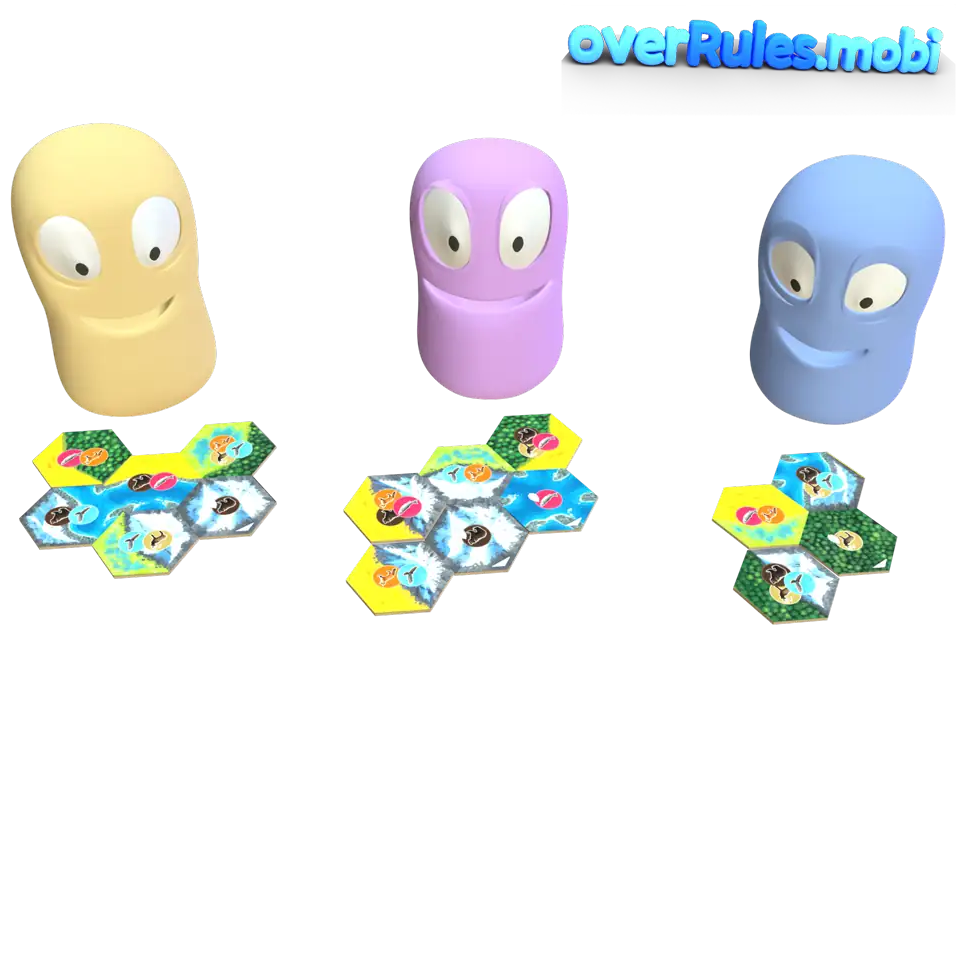
 Is there a tie?2 players tied: 2 points each
Is there a tie?2 players tied: 2 points each![Animatioin inside]()
![Expand]()
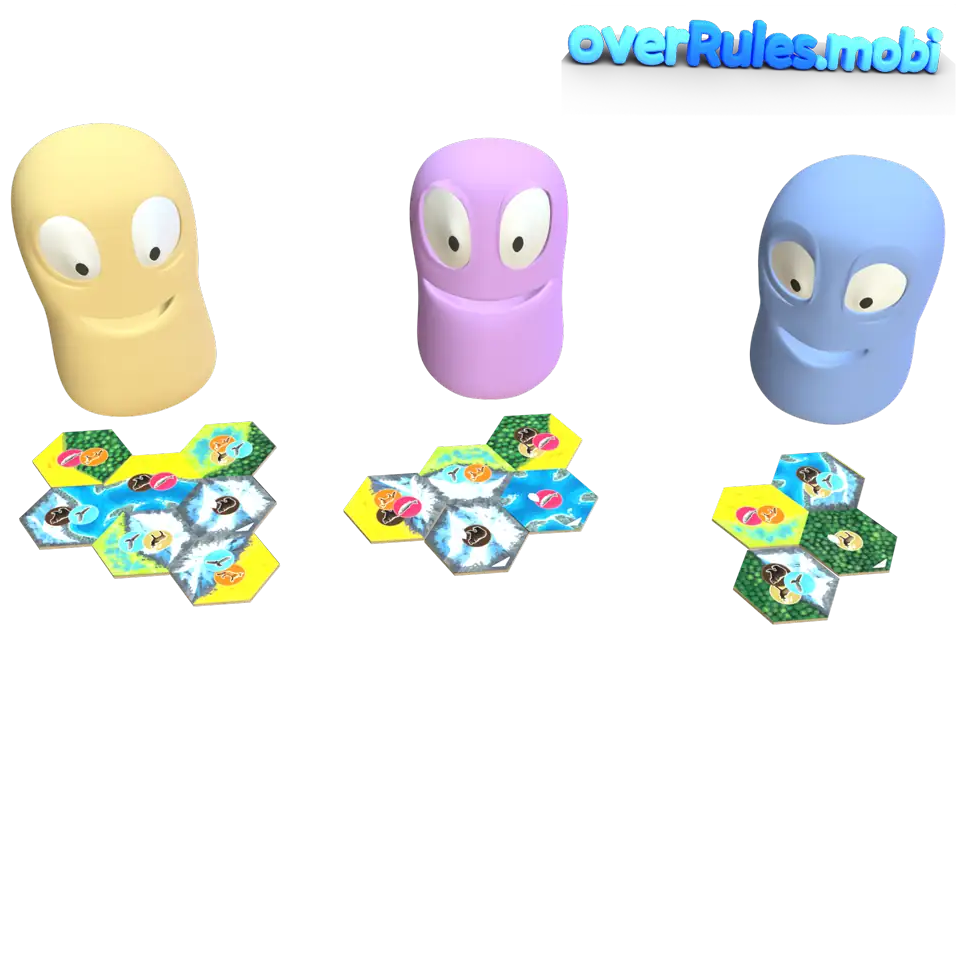
 3-4 players tied: 1 point each
3-4 players tied: 1 point each![Animatioin inside]()
![Expand]()
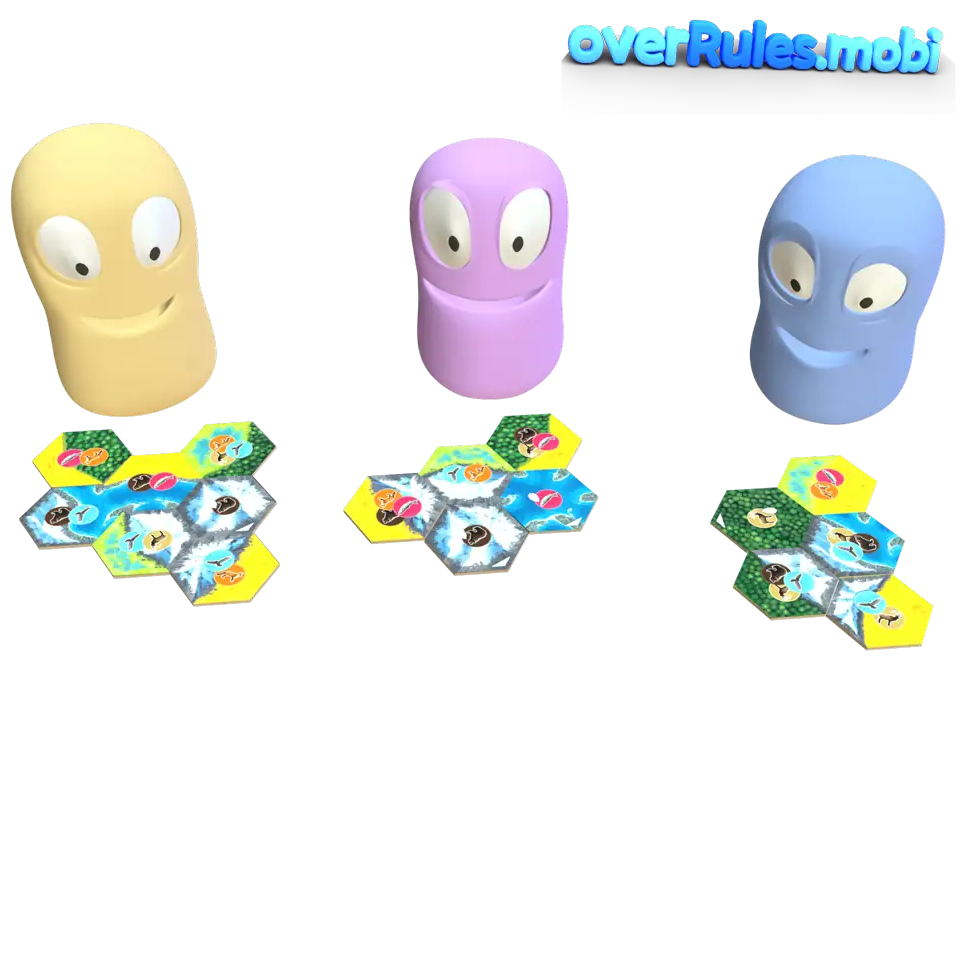

3Each remaining cone scores you one point
Scoring
1Each player does the following:![Expand]()
![Expand]()
![Link]()
![Animatioin inside]()
![Expand]()
![Animatioin inside]()
![Expand]()

 Enter the number of tiles on the score pad
Enter the number of tiles on the score pad![Animatioin inside]()
![Expand]()

 For bonus points, there's an extra box on the right
For bonus points, there's an extra box on the right![Animatioin inside]()
![Expand]()


1
Each player does the following:
Go through the animal cards one by one
You receive points according to the size and pattern
Here, the A cards are explained
Find the largest area of each landscape
The largest contiguous area counts


Enter the number of tiles on the score pad
The points go in the left part of the box


For bonus points, there's an extra box on the right


2Bonus points for areas![Expand]()
![Animatioin inside]()
![Expand]()
![Animatioin inside]()
![Expand]()

 If there's a tie, each player gets 1 point
If there's a tie, each player gets 1 point![Animatioin inside]()
![Expand]()

 3-4 players:
3-4 players:![Animatioin inside]()
![Expand]()
![Animatioin inside]()
![Expand]()

 Is there a tie?2 players tied: 2 points each
Is there a tie?2 players tied: 2 points each![Animatioin inside]()
![Expand]()

 3-4 players tied: 1 point each
3-4 players tied: 1 point each![Animatioin inside]()
![Expand]()


2
Bonus points for areas
For 2 players:
2 points for the largest area type


If there's a tie, each player gets 1 point


3-4 players:
Is there no tie?
largest area: 3 points
second largest area: 1 point


Is there a tie?
2 players tied: 2 points each


3-4 players tied: 1 point each


3Each remaining cone scores you one point
3
Each remaining cone scores you one point
Infos1Bear A![Animatioin inside]()
![Expand]()


2Elk A![Animatioin inside]()
![Expand]()
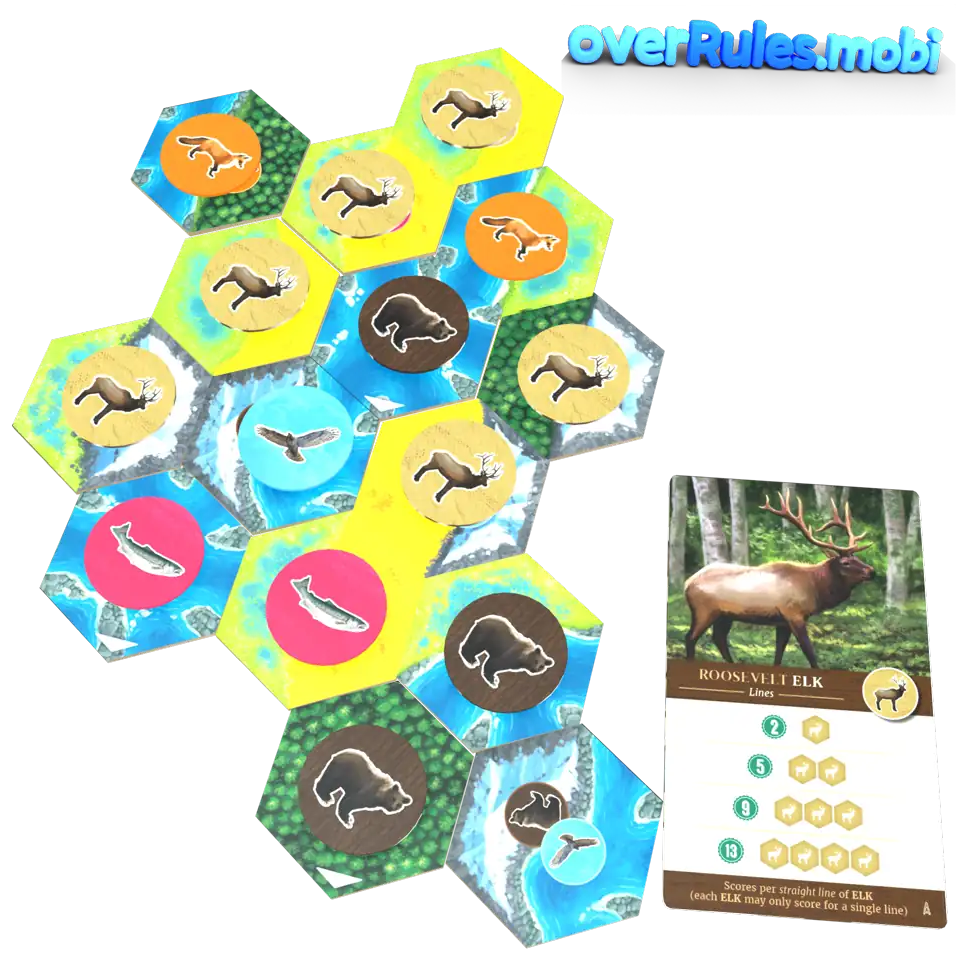

3Salmon A![Animatioin inside]()
![Expand]()
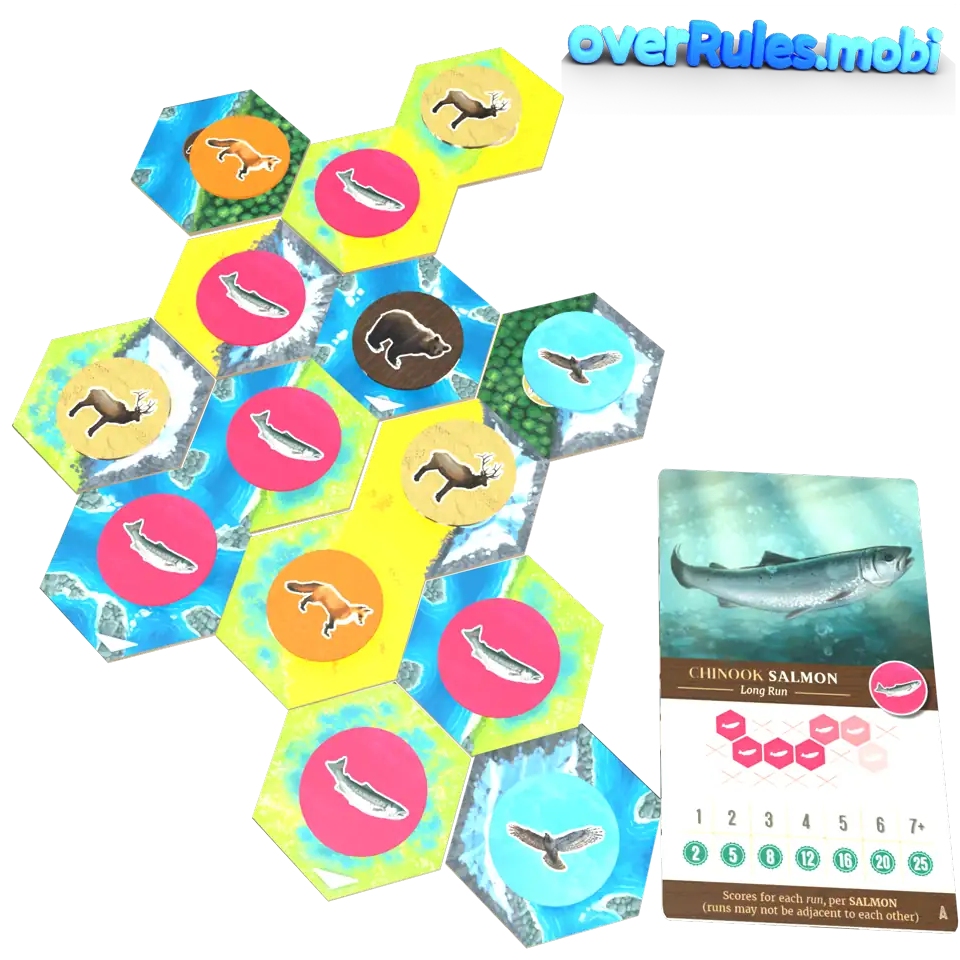

4Hawk A![Animatioin inside]()
![Expand]()
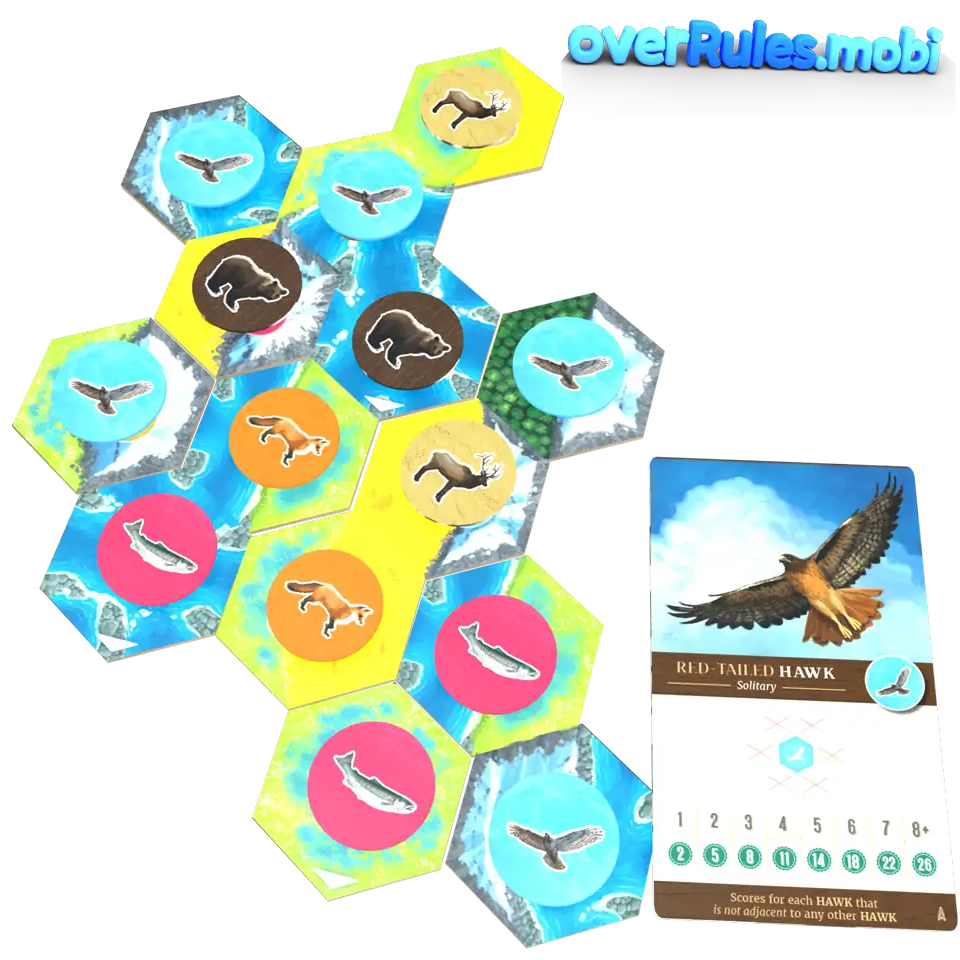

5Fox A![Animatioin inside]()
![Expand]()
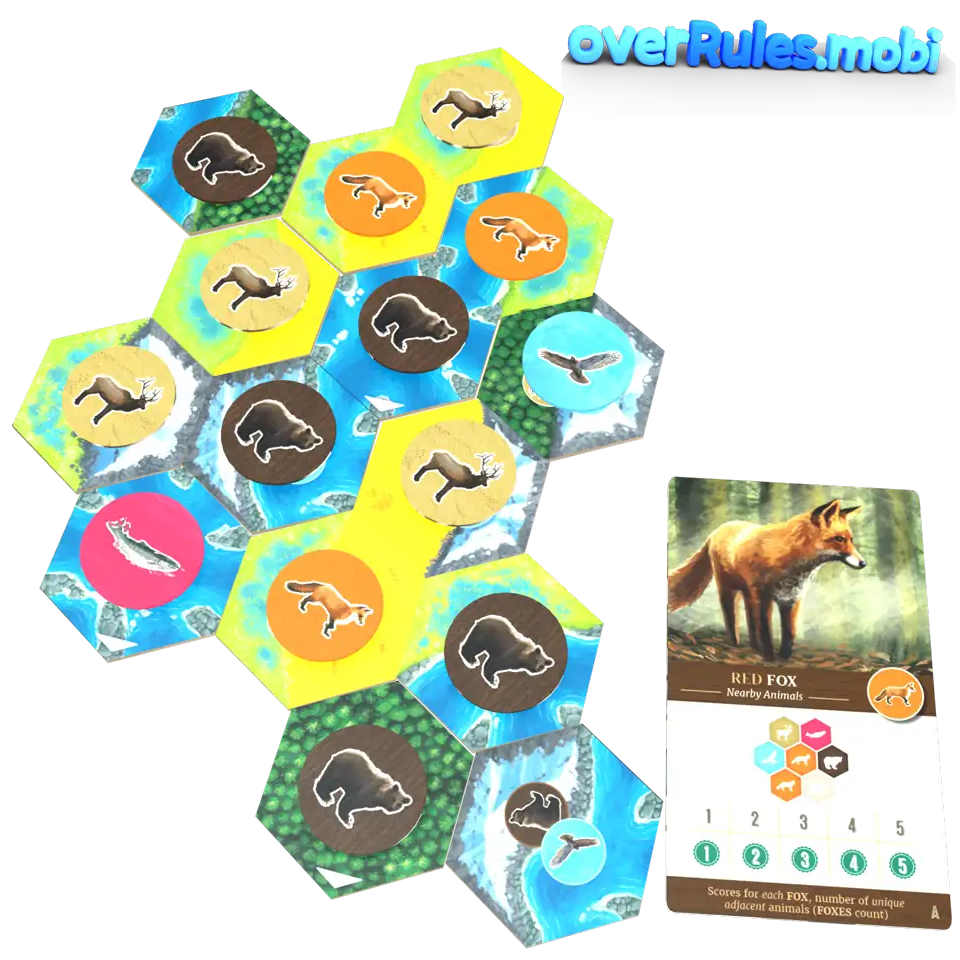

Infos
1Bear A![Animatioin inside]()
![Expand]()


1
Bear A
Bears always want to be in pairs
Solo bears or groups do not score points
Each pair increases the score


2Elk A![Animatioin inside]()
![Expand]()


2
Elk A
Elk must stand in a straight line
Lines must not cross. Each elk may only have 2 neighbors


3Salmon A![Animatioin inside]()
![Expand]()


3
Salmon A
Salmons must swim in a line
The line doesn't have to be straight
Lines must not cross


4Hawk A![Animatioin inside]()
![Expand]()


4
Hawk A
Hawks must fly alone
The more single hawks, the more points
Groups of hawks do not score points


5Fox A![Animatioin inside]()
![Expand]()


5
Fox A
Foxes want many different neighbors
Up to 5 points, as there are 5 animal species






